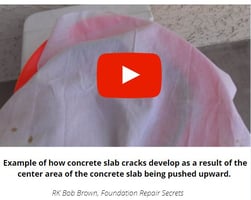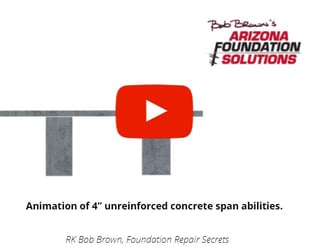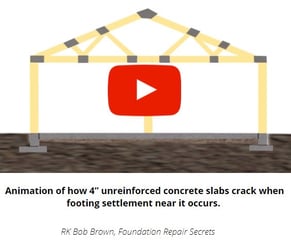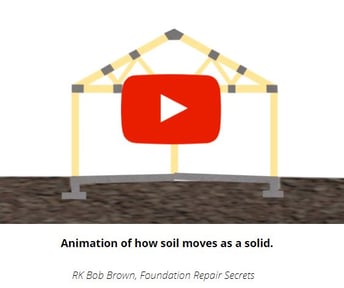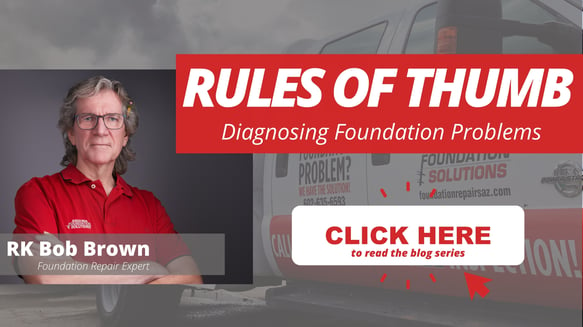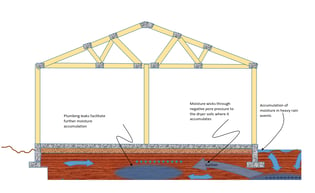Some “Foundation Repair Experts” tells us, repeatedly, that 3-point cracks are evidence of perimeter settlement. Science shows us otherwise.
Recently, I visited a home in Chino Valley, Arizona to document the signs of stress and to dispel some myths being propagated by local “foundation repair experts”. I put the term in quotes because in fact some of these contractors have never installed a pile, never engaged deep soil compaction grouting and have no formal education in soil mechanics or structural engineering. They are essentially concrete patching and repair contractors. Although they bill themselves as ‘35-year veterans’ and one of the few contractors who can accurately diagnose “foundation problems”, they really has no business or scientific qualifications diagnosing foundation movement as a result of soil movement.
I filmed my visit (linked right) and followed up with more comments after the visit to clarify and explain the concepts discussed and how they related to our forensic report that was sealed by one of our licensed, professional engineers.
In the next video (left), I show how typical floor slab cracks - particularly 3-point floor slab cracks- are a dead giveaway for floor slab heave and demonstrate why with a simple demonstration. This is because the “foundation repair experts” tells us repeatedly that 3-point cracks are evidence of perimeter settlement. Science shows us otherwise.
____________________________________________________________________________
Some local contractors call themselves 'Foundation Repair Experts' but have never installed a pile, never engaged deep soil compaction grouting and have no formal education in soil mechanics or structural engineering.
____________________________________________________________________________
Next, I demonstrate why settlement on the perimeter will not result in high points near the center with another simple demonstration about the ability of 4” unreinforced concrete’s ability to span that distance from the perimeter to the center of the home. (see video to the right.)
Some local self described “foundation repair experts” repeat unscientific claims.
You & your home deserve better.
I am doing this again to dispel the myth propagated by these self described “foundation repair experts” repeated unscientific claim that the reason for high area’s in the middle is simply perimeter settlement cantilevering the 4” unreinforced concrete 20 feet or so to the center of the house. Silly.
Check out the animation to the left to see why.
The last thing that I'd like to demonstrate is the fallacy of the “ foundation repair expert’s” claim of drilling a hole in the slab at it’s high point as a method of determining if there are expansive soils underneath. Wow! If that unscientific claim were really true, then geotechnical engineers are all ripping people off for charging thousands of dollars to do soil borings. This topic was addressed by David Deatherage PE in my interview with him and can be found here. https://www.foundationaz.com/blog/interview-with-david-deatherage-pe-of-copper-state-engineering . In my video I again use a simple demonstration to model what soil does as it expands under a slab. Drilling a hole under the slab will not tell you anything about the soil make up underneath it! Soils don’t behave as fluids because they are not fluids…. they are solids.
Only by completing a forensic investigation that utilizes a constellation of data gathered objectively, by those trained and supervised by licensed professional engineers, can you expect to arrive at an accurate observations, conclusions and recommendations that is backed by science.
To learn more about diagnosing foundation problems, check out the 'Rules of Thumb: Diagnosing Foundation Problems' blog series!
Leave a question or comment below.


.jpg?width=291&name=Educational%20Series%20Soil%20Heave%20(1).jpg)
